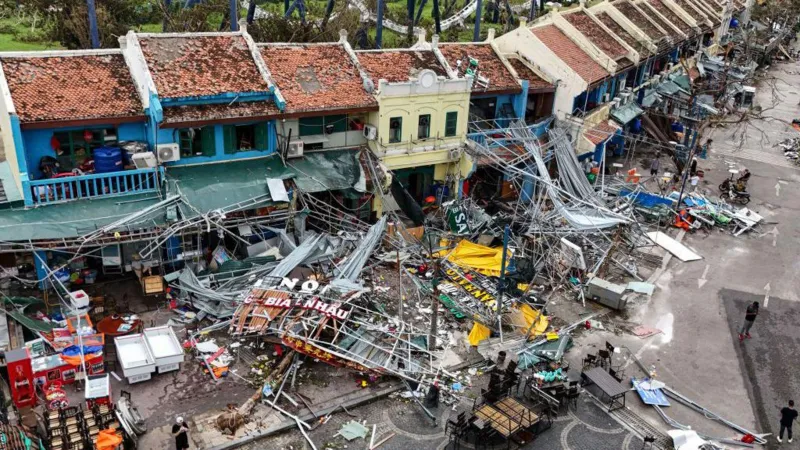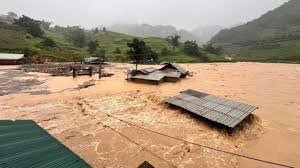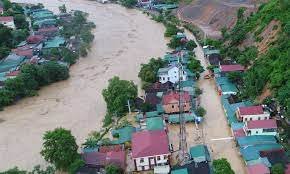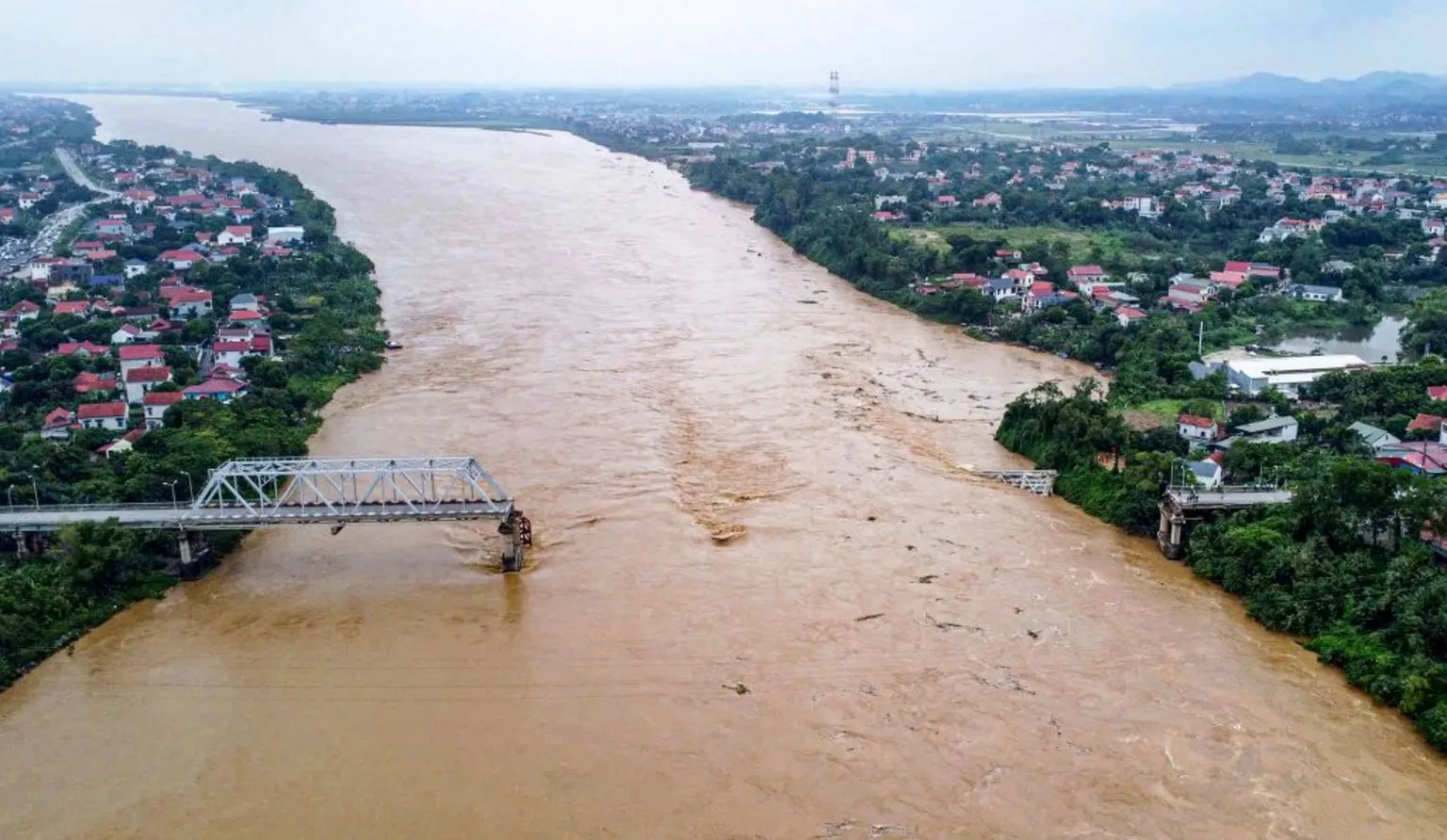The aftermath of Super Typhoon Yagi in northern Vietnam has been horrific, with a key bridge collapsing and widespread damage across the region. The Phong Chau bridge in Phu Tho province, a vital connecting route for locals, collapsed under the force of the storm, sending ten cars and two scooters into the Red River. Deputy Prime Minister Ho Duc Phoc reported the incident, saying rescue efforts had so far saved three people, but thirteen remained missing. The full number of casualties is still unknown. Yagi, described as Asia’s strongest typhoon this year, hit the region on Saturday with winds of 203 km/h (126 mph). Its impact has been severe, leaving a trail of devastation. The typhoon has killed more than 60 people since it hit Vietnam, with at least 44 of those deaths caused by landslides and flash floods. According to the Ministry of Agriculture and Rural Development, the victims include a 68-year-old woman, a one-year-old boy, and a newborn baby.
In addition to the human casualties, the storm has caused extensive damage to infrastructure. More than 240 people have been injured, and about 1.5 million residents are currently without electricity. Roofs have been ripped off buildings, trees have been uprooted, and roads are littered with debris. The ferocity of the storm has shown its effects in several provinces.

Despite the collapse of the bridge, a portion of the 375-meter (1230-foot) structure is still standing. The military has been tasked with building a pontoon bridge to restore some degree of connectivity as soon as possible. However, the immediate focus is on search and rescue operations, as well as managing the ongoing emergency response.
Since Yagi has weakened into a tropical depression, officials are still grappling with its consequences. The storm has caused severe flooding, particularly in Yen Bai province, where floodwaters reached one metre (three feet) high. This has forced 2,400 families to move to higher ground. Search and rescue teams are busy finding and assisting people stranded in floodwaters, including locating 27 people who were swept out to sea after several fishing boats were swept away.
In response to the crisis, about 50,000 people have been evacuated from coastal cities, and schools have been temporarily closed in 12 northern provinces, including Hanoi. The government has issued warnings for residents to stay indoors as the situation continues to evolve.

Before wreaking havoc in Vietnam, Typhoon Yagi also devastated southern China and the Philippines, where it killed 24 people. Scientists attribute the increasing strength and frequency of such storms to climate change. Warming ocean temperatures provide more energy for storms, resulting in stronger winds and more intense rainfall. Additionally, a warmer atmosphere can retain more moisture, leading to severe weather events like Yagi.
The devastation caused by Typhoon Yagi has underscored the urgent need for improved infrastructure and disaster preparedness in vulnerable areas. The immediate response is focused on rescue efforts and providing assistance to affected people, but long-term recovery will require significant support and reconstruction.

As Vietnam deals with the challenges posed by this powerful storm, the resilience of its people and the response of emergency services will be crucial in recovering from its aftermath. The support of the international community in helping the country recover and rebuild in the wake of this disaster is vital.

